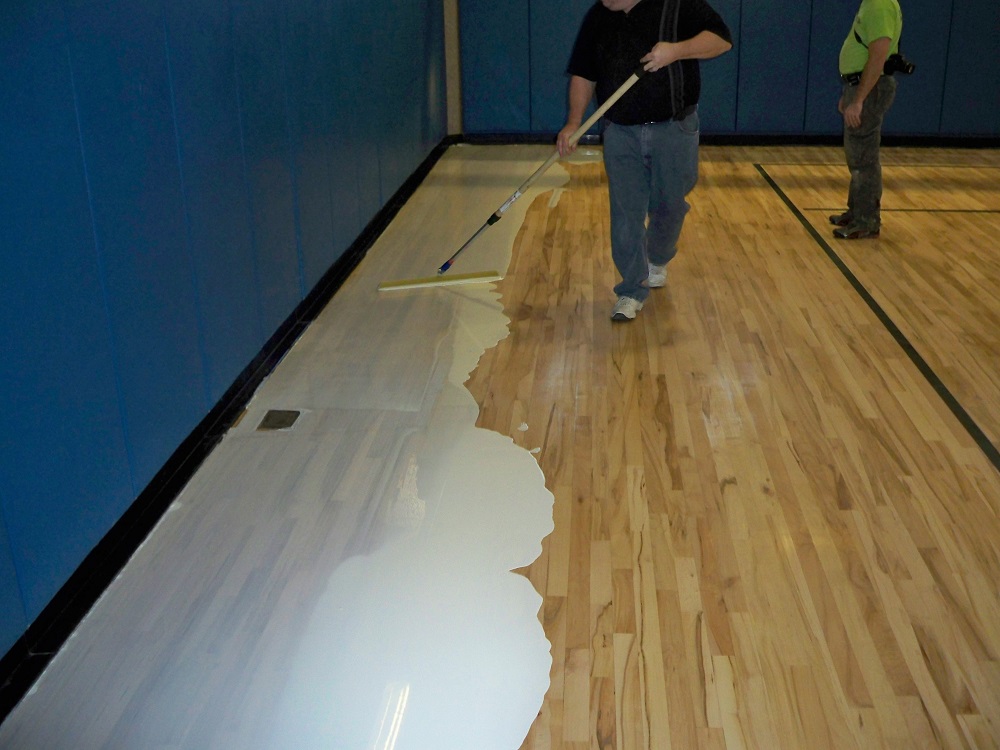Clean the floor with undiluted PoloPlaz Tie Tack. Normal tacking with this solution on a towel is sufficient. However, any concentrated areas of contamination can also be buffed with solution and a white pad – but do not apply excessive liquid on the floor. This cleaning procedure reduces the risk of spreading contaminates throughout the floor during the screening process.
Screen the entire floor with a 120-grit screen, changing as necessary. A floor is properly screened when it is thoroughly deglossed. A maroon pad may be used after screening to reduce the presence of any swirl marks that might show up in the finish coats.
Vacuum the floor thoroughly and clean peripheral dust so it won’t settle back on the wet finish. Using only water and clean towels, tack multiple times until the entire floor is clean (dark towels make it easier to see dirt that is collected from the floor). Allow the floor to dry completely after tacking, usually 30-45 minutes.
Turn off all airflow in the gym. If the HVAC cannot be turned off, block all intake ducts so airflow is reduced to an absolute minimum. Apply the first coat of Express or Dominator with an EZWay, lambs wool block or T-bar at 500 square feet per gallon. When using an EZWay, have a partner follow directly behind you with a lambs wool or T-bar to smooth out any harsh applicator lines.
Allow to dry for 4-6 hours. If within 24 hours, the second coat of finish may be applied without abrading the first coat. Please use your own discretion with this “24 hour rule,” as high temperatures and low humidity will shrink that time window. If abrasion is needed within 24 hours, screen with used 150-grit screens. If longer than 24 hours, used 120-grit or new 150-grit screens may be needed.
When using Express or Dominator, plan on two coats. Stay off the floor for two days and resume play after 72 hours. Install walk-off mats at all entrances and exits. Do not allow street shoes on the floor. Clean daily with PoloPlaz Hardwood Floor Cleaner and weekly with Tie Tack. Do not use automatic floor scrubbers, as this will void the warranty on your floor.



